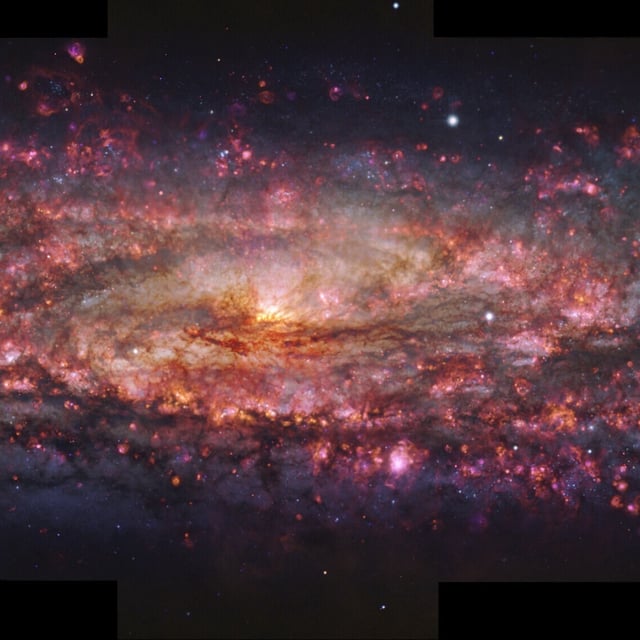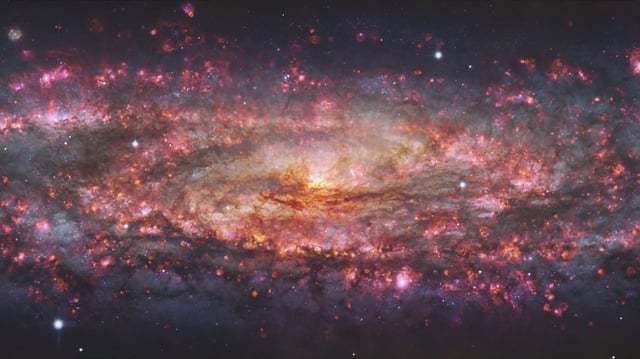Overview
- Scientists used the MUSE instrument on the European Southern Observatory’s Very Large Telescope in Chile, stitching over 100 exposures to span the galaxy’s 65,000-light-year diameter.
- The spectral map covers roughly 4,000 distinct wavelengths, isolating emissions from hydrogen, nitrogen, sulfur and oxygen to chart the age, composition and motion of its stars, gas and dust.
- Initial analysis identified about 500 planetary nebulae—five times the typical detection beyond our local group—to refine Sculptor’s 11-million-light-year distance measurement.
- As a nearby starburst galaxy, Sculptor bridges ultra-detailed Milky Way studies and broader surveys of distant systems, shedding light on intense star formation processes.
- Researchers will leverage the detailed data to trace how gas flows, changes composition and fuels new stars across the galaxy.

